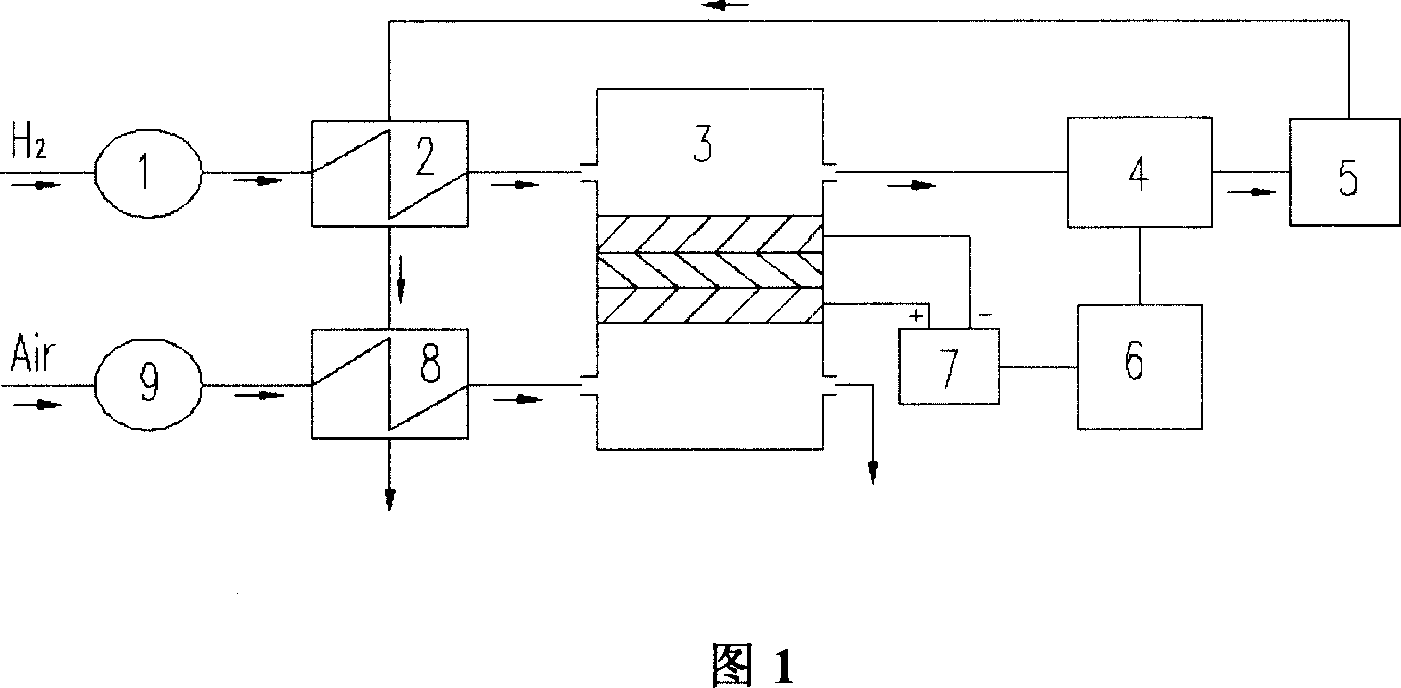Combined driving air conditioning system by proton exchange film fuel battery and internal combustion engine
A proton exchange membrane and fuel cell technology, applied in fuel cells, fuel cell additives, fuel cell heat exchange, etc., can solve urban environmental pollution, low energy utilization, and the combined drive of proton exchange membrane fuel cells and internal combustion engines. Issues such as air-conditioning system technology public reports, to achieve the effects of saving energy, improving the overall efficiency of heat and electricity, and using pollution-free
- Summary
- Abstract
- Description
- Claims
- Application Information
AI Technical Summary
Problems solved by technology
Method used
Image
Examples
Embodiment Construction
[0014] In order to better understand the technical solution of the present invention, further description will be made below in conjunction with the accompanying drawings.
[0015] The system structure of the present invention is shown in Figure 1, consists of a fuel electrode compressor 1, a fuel electrode heat exchanger 2, a proton exchange membrane fuel cell 3, an internal combustion engine 4, a gas air conditioner 5, a driver 6, an electric motor 7, and an air electrode heat exchanger Device 8, air pole compressor 9 and other equipment constitute. The power output end of the proton exchange membrane fuel cell 3 is connected to the inlet port of the motor 7, the outlet end of the motor 7 is connected to the driver 6, the fuel electrode outlet port of the proton exchange membrane fuel cell 3 is connected to the inlet port of the internal combustion engine 4, and the power output end of the internal combustion engine 4 Connect the driver 6, the outlet port of the internal com...
PUM
 Login to View More
Login to View More Abstract
Description
Claims
Application Information
 Login to View More
Login to View More - R&D
- Intellectual Property
- Life Sciences
- Materials
- Tech Scout
- Unparalleled Data Quality
- Higher Quality Content
- 60% Fewer Hallucinations
Browse by: Latest US Patents, China's latest patents, Technical Efficacy Thesaurus, Application Domain, Technology Topic, Popular Technical Reports.
© 2025 PatSnap. All rights reserved.Legal|Privacy policy|Modern Slavery Act Transparency Statement|Sitemap|About US| Contact US: help@patsnap.com

